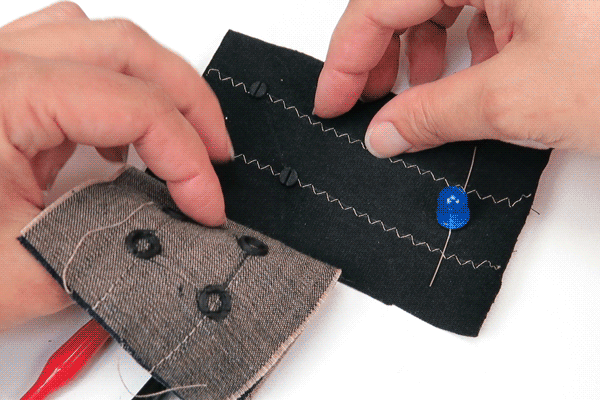This is a follow-up to a snap fabric I created when I started experimenting with 3D printing onto fabrics . With the snaps being conductive a whole modular system could be created for snapping on and off wearable electronics. I’m excited to finish this because it has taken a lot of experimentation and time to get this far. There is still so much more to explore. Rachel Freire has joined me on my conductive snap adventure, so look out for her own developments of eTextile connectors. She has printed a snap socket that fits existing metal studs! One idea that I intend to incorporate into my own work at some point.
The swatches I show/create in this instructable were made for eTextile SummerCamp, a camp that is held in France yearly. It’s an event that eTextile and wearable electronic practitioners go to to share ideas and create. Along with many activities is the eTextile Swatch Exchange. Anyone who participates in the exchange makes a swatch for themselves and all other participants. It promotes sharing work that you are developing pertaining to eTextiles and everyone gets a lovely book full of incredible work and concepts.
My swatch this year consists of two swatches. One is a woven cotton with a snap socket. the second is a knitted cotton with a printed post. Both are printed using conductive PLA on top of the conductive thread traces.
The designs used in this instructable are meant to be morphed and explored. This is just a starting point for those of you looking for custom connectors. Download and change the shape of the snap halves. Print them onto ironed-on conductive fabric, woven bespoke fabric or change the materials of the snaps (use PLA and cond. PLA!). Better yet, print a sensor… with snaps! The conductive filament is actually fairly resistive (good for sensors) which needs to be considered when designing your circuit or choosing to use it for connectors in your project.
Ready to learn how to make some snap connectors for your wearable? Let’s do it!
